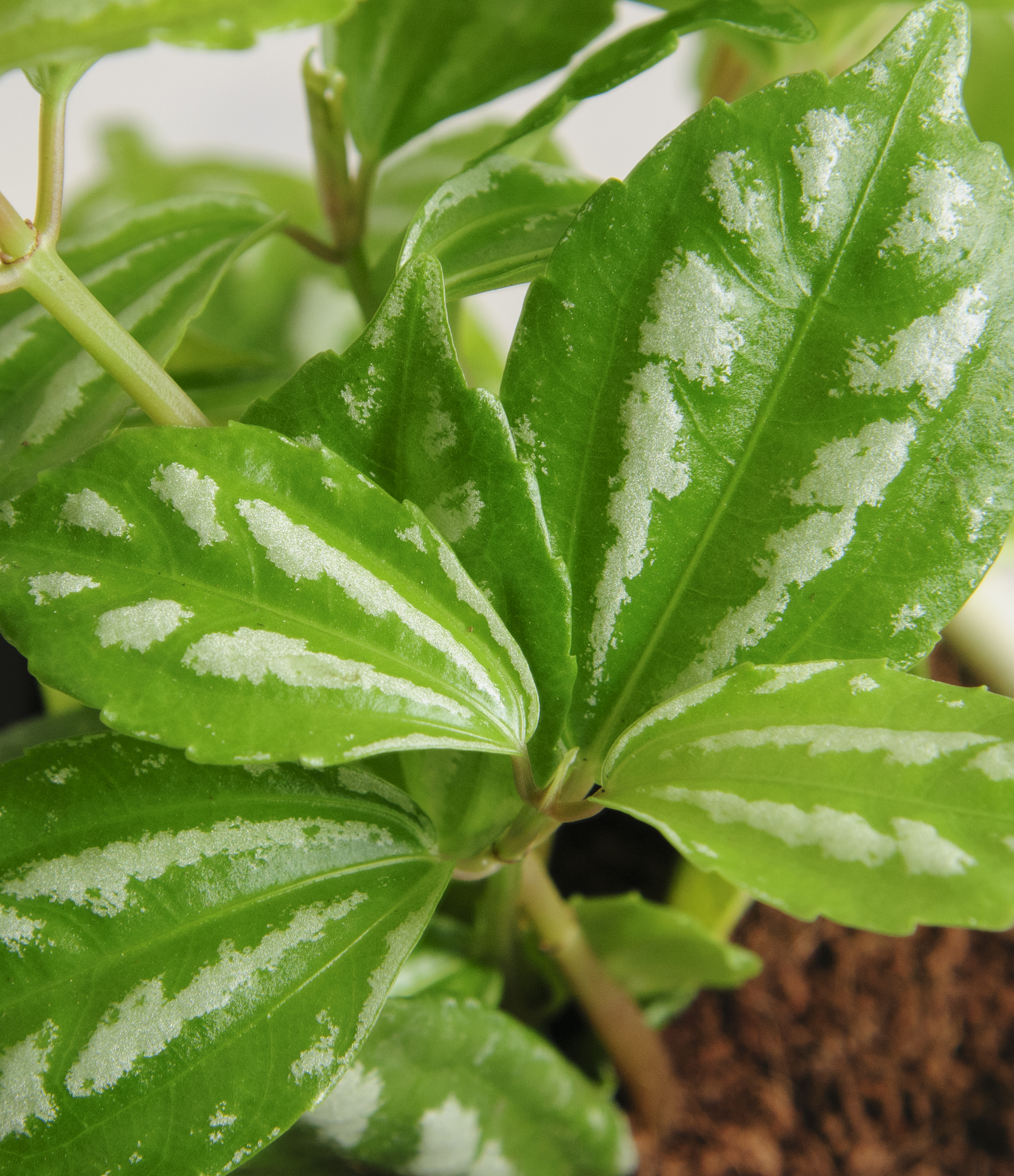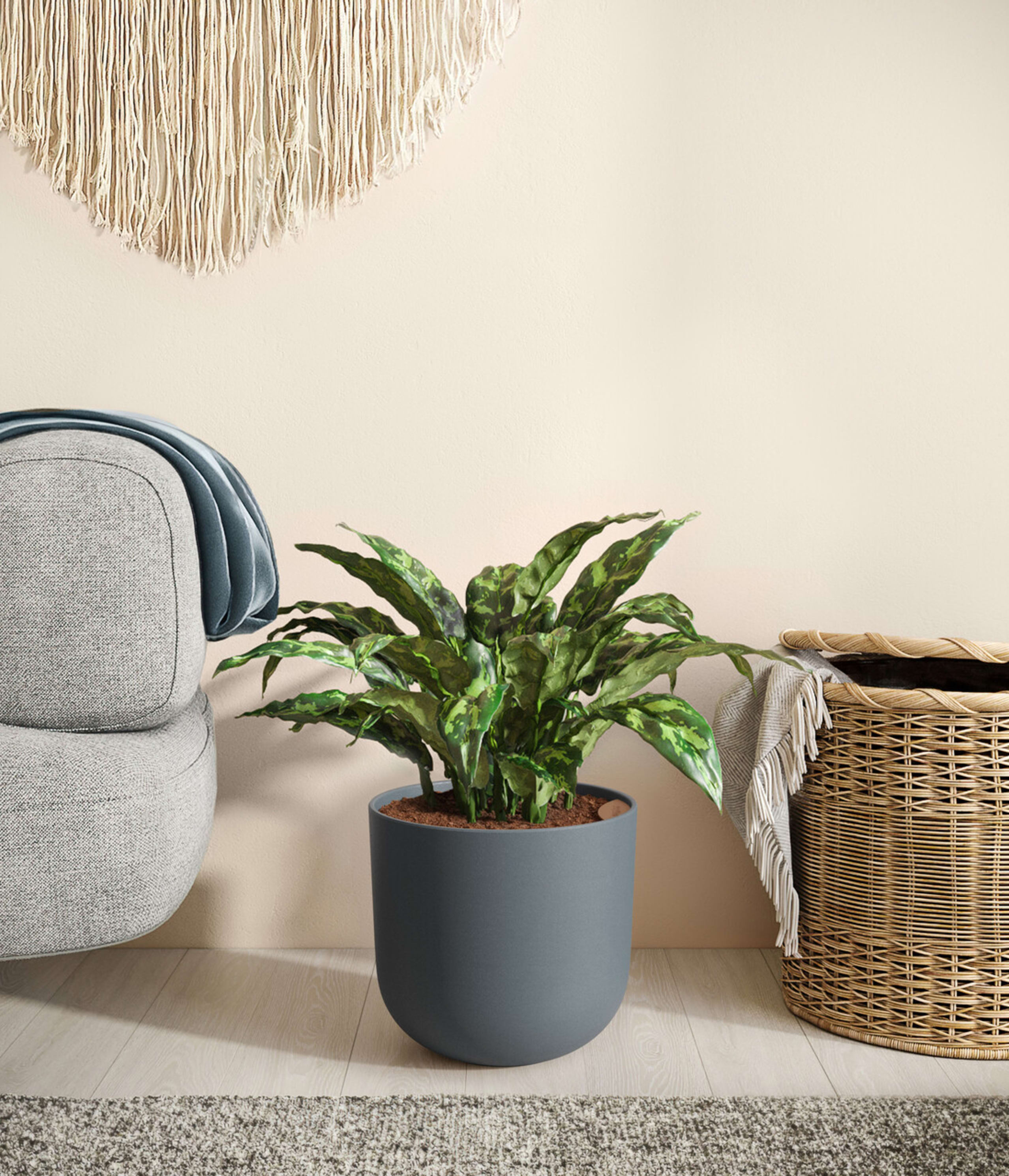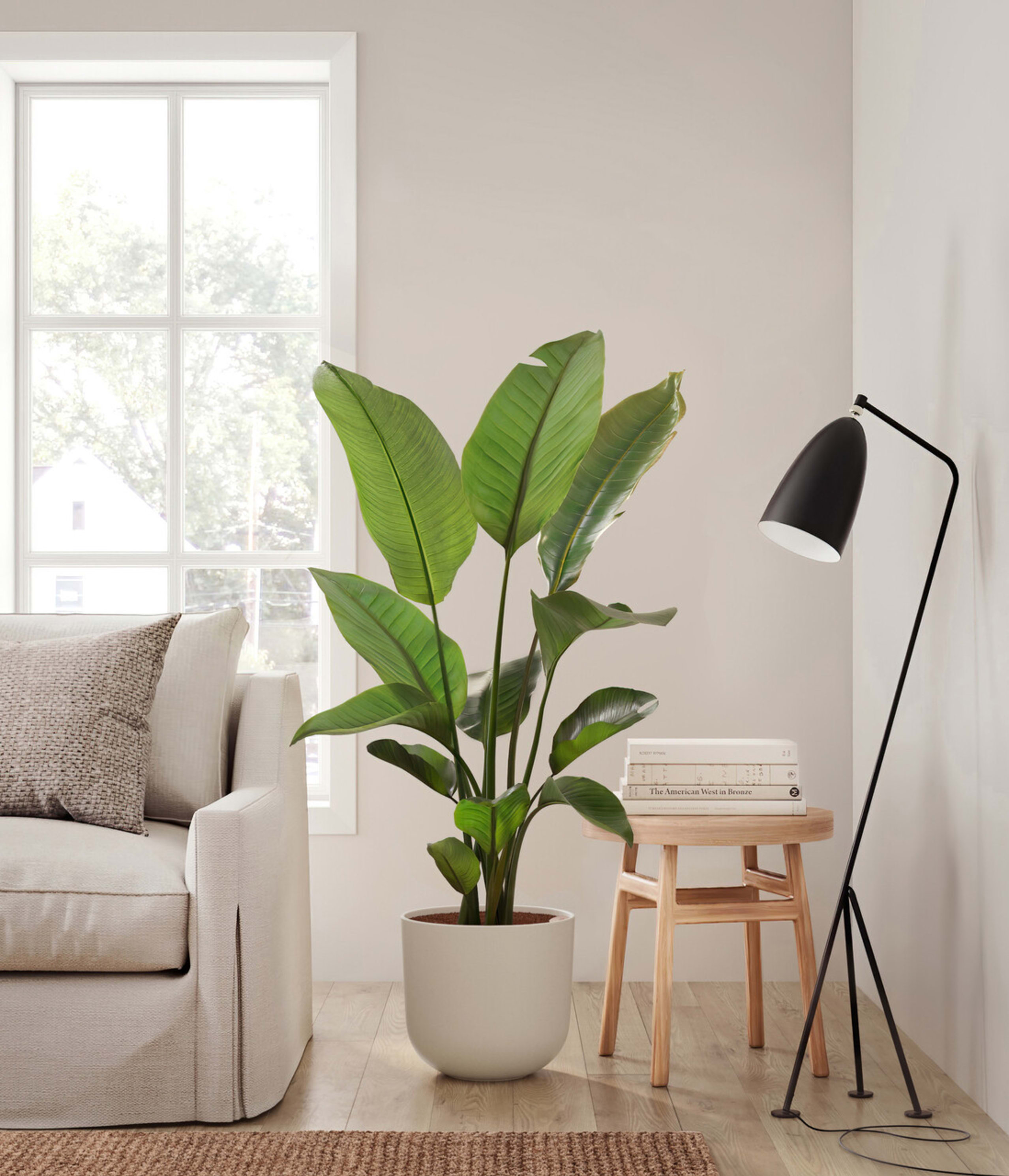How to Care for Aluminum Plant
About Aluminum Plant
Originating from the tropical regions of Southeast Asia, the Aluminum Plant, or Pilea cadierei, enchants with its unique silver-patterned foliage. This striking houseplant adds a touch of elegance to any space, effortlessly enhancing your indoor environment with its distinctive charm. Known for its captivating leaves and ease of care, the Aluminum Plant is perfect for bringing a piece of the tropics into your home, making it a delightful addition to your collection.
Other common names
- Watermelon Pilea
- Pilea Silver
- Silver Pilea
- Pilea Aluminum
How Often Should I Water My Aluminum Plant?
With easyplant, watering your Aluminum Plant is simple and efficient. Check the easyplant reservoir once a month and refill it when empty to ensure consistent moisture levels for your plant. This method helps to avoid the common issues of overwatering and underwatering, providing your plant with just the right amount of hydration.
Aluminum Plant Light Needs
Aluminum Plant grows best in a space with medium to bright indirect light, where the sun rays are diffused, and can also adapt to spaces with bright direct light, where the sunlight streams inside directly. Avoid placing it in spaces with low light or spaces without natural sunlight.
For the best growth, place your Aluminum Plant near an east or north-facing window where it can receive ample light without direct exposure to the sun's harsh rays. If natural light is limited, this plant can also thrive under fluorescent lighting, making it an excellent option for offices and other indoor spaces with artificial light sources. Ensuring the right light conditions will help maintain the vibrant silver patterns on its leaves and promote healthy, robust growth.
Aluminum Plant Care
On its first few days at home, the Aluminum Plant might shed a leaf or two as it acclimatizes to its new environment. This is a natural adjustment period and shouldn't cause alarm. To help it settle in, avoid moving the plant too frequently which can cause stress. Instead, find a suitable spot where the light conditions are ideal and try to maintain a stable environment. To maintain its aesthetic shape and promote healthy growth, dust the leaves regularly and rotate the plant by a quarter turn every month. This ensures all sides of the plant receive equal light, preventing it from leaning towards the light source. Additionally, pruning any leggy or damaged growth can help keep your Aluminum Plant looking lush and full. Regular care and attention will ensure that your Aluminum Plant continues to thrive and enhance your living space with its striking foliage.
How Big Will My Aluminum Plant Grow?
The Aluminum Plant (Pilea cadierei) is a compact grower, typically reaching a height of 12-18 inches and spreading up to 12 inches wide. Its manageable size makes it an excellent choice for small spaces such as desktops, shelves, and windowsills. With proper care, including adequate light and regular watering, your Aluminum Plant will maintain a lush and vibrant appearance, adding a touch of natural beauty to any indoor space.
Temperature & Humidity
The Aluminum Plant thrives in warm environments, with ideal temperatures ranging between 65-75°F (18-24°C). It is important to keep the plant away from drafts, such as those from windows, doors, and air conditioning vents, as sudden temperature fluctuations can stress the plant. Humidity is also a crucial factor for the health of the Aluminum Plant. This tropical plant prefers moderate to high humidity levels, ideally between 50-70%. If the air in your home is too dry, especially during winter months when heating systems are in use, consider increasing the humidity around your plant. You can do this by placing a humidifier nearby, using a pebble tray filled with water, or grouping it with other plants to create a more humid microenvironment. Maintaining the right temperature and humidity levels will help keep your Aluminum Plant healthy and vibrant, ensuring its distinctive silver patterns remain sharp and its leaves lush.
Are Aluminum Plants Toxic for Pets & Kids?
The Aluminum Plant (Pilea cadierei) is non-toxic and safe for both pets and children. This makes it an excellent choice for households with curious pets or small children who might interact with houseplants. Unlike some other houseplants that contain toxic compounds, the Aluminum Plant does not pose any health risks if ingested or touched.
Troubleshooting Common Problems with Aluminum Plant
If you notice your Aluminum Plant has yellowing leaves, this often indicates overwatering. Allow the soil to dry out between waterings and ensure that the reservoir is empty before refilling it.
If the edges of your Aluminum Plant leaves turn brown, it could be a sign of low humidity or inconsistent watering. Increase the humidity around your plant by using a humidifier, placing it on a pebble tray with water, or grouping it with other plants. Ensure you water according to instructions, allowing the soil to dry slightly between waterings.
If you notice your Aluminum Plant becomes leggy, it is likely not receiving enough light. Move the plant to a brighter location with medium to bright indirect light to encourage more compact and healthier growth.
Sudden leaf drop can occur due to environmental stress such as sudden temperature changes, drafts, or inconsistent watering. Ensure your Aluminum Plant is in a stable environment with consistent care routines.
Common pests that can affect the Aluminum Plant include spider mites, aphids, and mealybugs. Regularly inspect your plant for signs of pests and treat any infestations promptly with insecticidal soap or neem oil. Keeping the leaves clean and dust-free can also help prevent pests.
By closely monitoring your Aluminum Plant and addressing any issues promptly, you can ensure it remains healthy and continues to enhance your indoor space with its striking foliage.
Frequently Asked Questions about Aluminum Plant Plant
- What is an aluminum plant?
The Aluminum Plant, or Pilea cadierei, is a tropical houseplant known for its striking silver-patterned foliage. Originating from Southeast Asia, this plant adds a touch of elegance to indoor spaces with its unique and attractive leaves.
- Is an aluminum plant easy to care for?
Yes, the Aluminum Plant is relatively easy to care for. It thrives in medium to bright indirect light, requires moderate watering, and enjoys a warm, humid environment. Its low maintenance makes it suitable for both novice and experienced plant enthusiasts.
- How big do aluminum plants get?
Aluminum Plants are compact and typically grow to about 12-18 inches (30-45 cm) in height. Their small size makes them ideal for desktops, shelves, and other limited spaces.
- How much light do aluminum plants need?
Aluminum Plants grow best in medium to bright indirect light. They can adapt to bright direct light, but direct sunlight should be avoided as it can scorch the leaves. They are also able to tolerate lower light conditions, making them versatile for various indoor environments.
- How often should I water an aluminum plant?
Using an easyplant system, check the reservoir once a month and refill it when empty to ensure consistent moisture. Without easyplant, water your Aluminum Plant when the top inch of soil feels dry. Typically, this means watering approximately every 1-2 weeks, depending on the humidity and temperature of your environment.

 Small Plants
Small Plants Medium Plants
Medium Plants Plants Collections
Plants Collections Large Plants
Large Plants Huge Plants
Huge Plants